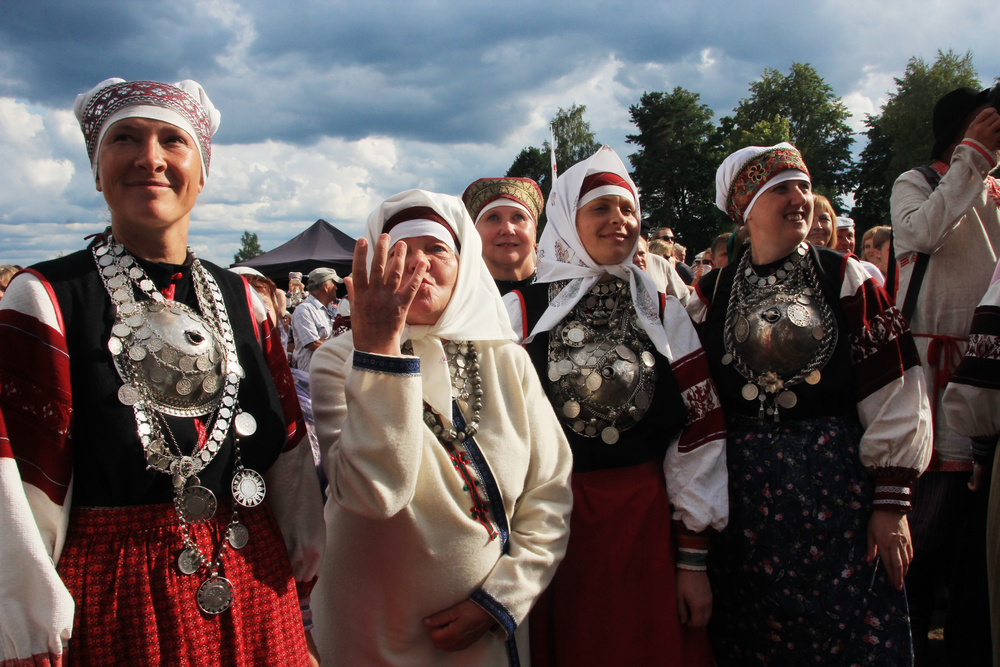Paganism
Introduction: Paganism is an ancient religion that was practiced in Estonia until the Christianization of the country in the 13th century CE. A central characteristic of paganism is a deep reverence for the earth and nature, which could be called "nature worship." Paganism also is intertwined with animism, which is the belief that all things, including animals, inanimate objects, and natural phenomena, have a spirit. These ideas are central characteristics of Estonia's Maausk belief system, which translates to “Earth belief," or "faith of the Earth." An assortment of ancient pagan beliefs remain embedded in Estonian culture, sometimes as myth.
Origin: Paganism established roots in the country before national borders existed and long before Christianity was introduced. This occurred, often brutally, through the expansion of the Danish empire in the 13th century. It may be the cultural memory of this time, and the fact that prior to the country's independence in 1991 the region was ruled by foreign powers, that results in Estonians holding onto beliefs and traditions that tie them to their native landscape.
History: Paganism flourished in ancient, pre-Christian times. Maausk beliefs, which are native to the country and trace back thousands of years, center around the sacred status of nature. However, Maausk is not viewed as a religion but instead represents a collection of Estonian beliefs, verbal traditions, songs, and customs.
Adherents: Though no official statistics exist on the number of adherents to paganism in Estonia, a significant portion of the population holds on to some fundamental animist or pagan ideas; around 50 percent of the population believes in some spirit or external life force. Among the country's minority Seto ethnic group who live in southeastern Estonia, Peko is considered the god of crops and is linked to barley and brewing. He is still celebrated as a hero and god among the Seto today.
Belief System: Paganism is linked to nature first and foremost. It is considered polytheistic as it reveres gods and goddesses that are linked to or represent aspects of nature. In this respect, the natural world is divine, as is the connection to it. Celebrations and ritual revolve around seasonal and astronomical events including solstices, while certain natural sites are sacred, among them trees, groves, stones, and springs. Essential to understanding Maausk beliefs, the word "maa" implies many things related to the physical earth, but foremost it denotes the land or country of indigenous Estonians.
Practices: Estonians performed certain rites and continue to today, among them bonfires at midsummer and on the winter solstice, prior to which the "season of souls" is recognized. Throwing coins into springs and tying ribbons to trees containing stork nests are customs still performed by newlyweds today. Pagan rituals and ceremonies celebrate the changing of the seasons and the cycles of the moon as well. Festivals and holy days occur throughout the year, many of which are tied to the cycles of the seasons and the agricultural calendar.
Rituals, Events, Celebrations
- Midsummer: Celebrated on the summer solstice, this day recognizes fertility and of light defeating darkness. Large bonfires are lit to ward off dark forces, thought to be strong during the longest day of the year.
- Jõulud (Yule): Celebrated on the winter solstice, (usually around December 21), this is a time for honoring ancestors and the return of the sun. Celebrations include feasting, singing, dancing, and music, and marks the beginning of the new year. Historically, sacrifices were made for the gods and the ancestor spirits and singing occurred for 12 consecutive days.
- Kevadpüha (Spring Day or May Day): Celebrated with bonfires and feasts on the vernal equinox, this is a time for welcoming the return of spring and the renewal of life.
- Mardipäev (Martinmas): Celebrated on November 10, this is a time for honoring the ancestors and the dead. It is similar to Halloween in other countries and a time for children to celebrate the season.
Sacred Texts: Pagans do not have a specific sacred text, but draw upon a variety of sources, including ancient myths and legends, poetry, and folk tales.
Places of Worship: Pagans do not have formal places of worship though many natural sites are deemed important. Shrines may be located on hilltops, in forest groves, or near large and old trees. Private worship may also occur in the home.
Sacred Places: Followers of paganism view certain groves, stones, springs, and trees as sacred, and these were the places where sacrifices and prayer occurred, sometimes in secret. These places are located throughout Estonia. The Seto view the hill Jumalamägi as sacred, and a statue of Peko stands atop it. Seto legend claims the hill is where God arrives to gather souls of the dead and take them to heaven in a horse-drawn wagon, and they visit the hill and icon to seek blessings for themselves or loved ones.
Leadership Structure: Paganism does not have a formal leadership structure, but practices may be led by an elder or spiritual guide.
Role in Society: Paganism has remained as a fundamental belief that is entwined with Estonian culture, and it has experienced a resurgence as a way for Estonians to connect with their ancient, land-revering heritage.
Copyright © 1993-2025 World Trade Press. All rights reserved.




